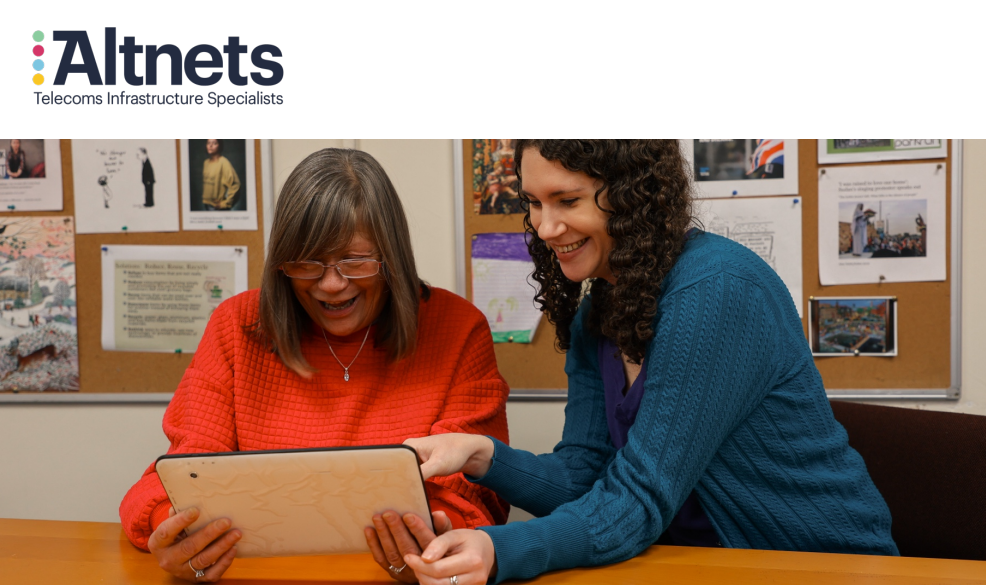Overcoming the digital divide and digital poverty in the UK has been a key priority for ISPs, who have delivered initiatives across the nation to provide improved and affordable connectivity, and improved digital literacy. In this report, Altnets (an ISPA Partner) examines the pivotal role UK ISPs have had in bridging the divide and overcoming four main barriers to it, including:
- Building the full fibre networks in a cost-efficient way that will generate returns for an ISP
- Ensuring that the correct government support and funding is available to promote the expansion of networks and nationwide connectivity
- Funding and other sector support to provide the device necessary to connect those currently in need of connection
- Converting consumers to sign up to a full fibre internet connection
Why is the Digital Divide an issue?
The digital divide limits economic and social opportunities for those without access to superfast broadband, causing them to pay up to 25% more for essential goods and services. Improved broadband can benefit the overall economy, as evidenced by the Covid-19 pandemic's demonstration of its importance for businesses, regional economic stability, and the transition to a cashless society. A 2022 Good Things Foundation report indicated a £1.4bn investment in gigabit broadband could yield £13.7bn in economic benefits, with a return of £9.48 for every £1 invested. As of January 2024, the UK achieved over 80% gigabit capable coverage overall, which signifies the great work of the sector. However some deployment is still yet to be fulfilled with only 40% of rural England, 29% in Scotland, and 38% in Wales.
How are ISPs driving connectivity forward and what are the barriers they face?
Independent ISPs in the UK are working to provide gigabit broadband to remote areas, such as Cornwall and the Shetland Islands. B4RN is focusing on the hardest-to-reach communities, with BDUK awarding 32 contracts worth £1.3bn to independent ISPs to build for 760,000 premises. BDUK's voucher programme to support ISPs has been extended to 2028 due to high demand. Independent ISPs target rural areas due to less competition, while larger telecoms companies, like Openreach, are starting to shift focus to these regions too.
Challenges for ISPs include difficult terrain, infrastructure costs, supply chain delays, wayleaves, and planning permissions. Obtaining electronic communication code powers from Ofcom can be costly and time-consuming but would streamline the process. Council permits for street works add another layer of difficulty due to varying procedures across 350 councils. A more uniform approach from the government could ease these challenges.
Quality products and efficient buildouts are crucial for high Capex investment in hard-to-reach areas. Supporting ISPs to build full-fibre connections in these regions will help address the Digital Divide, promoting greater equality and economic prosperity in the UK.
Overcoming the challenge of educating consumers
Building networks for underserved communities is just one challenge; getting consumers to use them is another, especially due to digital poverty. Many lack the necessary technology or skills to utilize superfast broadband. A 2024 study led by the University of Liverpool and others, funded by the Nuffield Foundation and others, found that 4 in 10 UK households with children fall below the minimum digital living standard (MDLS), which includes internet access, equipment, and digital skills.
ISPs have worked within communities to combat digital poverty. For instance, Wildanet in Devon and Cornwall launched the KIT|24 scheme to provide unused donated devices to those in need and offers social tariffs to help afford broadband.
Access to reliable internet can be transformative. Ellen Morris from Cornwall highlighted that switching from a 30-40Mbps copper connection to a 200Mbps fibre connection profoundly enhanced her home internet experience.
Dr. Emma Stone from Good Things Foundation pointed out that 45% of households with children fall below the MDLS, highlighting the Digital Divide. However she did acknowledge the efforts of ISPs, stating “We are grateful for the efforts of ISPs in tackling the issue, particularly those that are taking action to provide households with the necessary devices to get them online and offering social tariffs.”
How can ISPs continue to minimise the Digital Divide?
The Digital Divide exists for a number of reasons, and shortening the gap is a challenge facing ISPs over the next few years. The remaining parts of the UK that do not yet have a gigabit broadband connection are largely classed as hard-to-reach. On top of the complexity, expertise and financial investment required to undertake such builds, there remains the problem of converting end users, many of whom are living in digital poverty without the required devices or skills to make use of a full fibre connection.
Many ISPs are doing what they can to support the communities they are connecting, but much more could be done to ease the approach to the builds themselves and address the issue of digital poverty nationwide. It is not just the ISPs and the individuals themselves who will benefit, but the nation as a whole.
Read the full report

